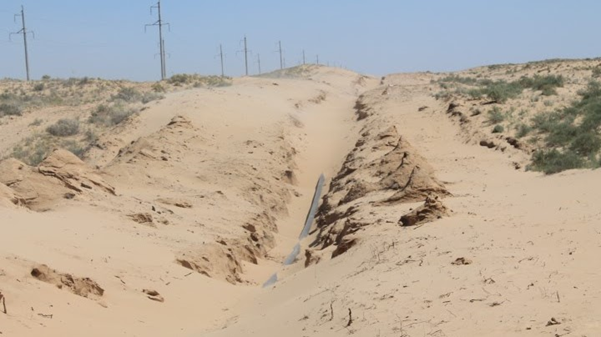
#LandDegradation #LDN #DLDD #UNCCD #CAREC #DroughtandSDS #Central Asia
Reversing Land Degradation is Possible Through Cooperation and Community Involvement
Desertification and drought are of common concern. According to the United Nations Convention to Combat Desertification (UNCCD) 23% of land globally is no longer productive, while a staggering 75% of land has been transformed from its natural state, mostly for agriculture. The transformation of land use is taking place at an unprecedented rate, and has gained pace over the last 50 years.
Desertification, land degradation and drought (DLDD) are interrelated and have a direct negative impact on people's daily lives. Land is the source of 99% of the calories each person needs to live a healthy life. The loss of fertile lands creates competition for food, water, and other vital resources. Moreover, DLDD makes people around the world vulnerable to disasters such as drought and floods, which are becoming more frequent, prolonged, and severe. Healthy land is the primary barrier to many natural disasters.
Given that land degradation is largely a human-induced problem, it can only be solved by joint action. The next decade is critical to addressing DLDD. If land degradation continues at current rates, the damage to ecosystems could be irreversible. At the same time, land restoration can bring many benefits.
In order to promote public awareness of the issue and let people know that DLDD can be effectively tackled, the UN General Assembly officially declared June 17 as the World Day to Combat Desertification and Drought. By doing this, the UN wants people to know that solutions to DLDD are possible and that strong community participation and cooperation at all levels is crucial in dealing with desertification and drought.
The UNCCD Secretariat helps countries around the world to build their resilience to desertification and drought and develop mechanisms to mitigate the adverse effects of these natural disasters. In Central Asia, the UNCCD Secretariat collaborates with the Regional Environmental Centre for Central Asia (CAREC) on the project "Regional Approaches to Sand and Dust Storms and Drought Management" which aims to enhance Central Asian countries' preparedness for drought and sand and dust storms and facilitate large-scale regional cooperation and data sharing.
The fast-approaching World Day to Combat Desertification and Drought is a unique moment to remind everyone that reversing land degradation is possible through problem-solving, strong community involvement and cooperation at all levels.
In 2021, the goal of the World Day to Combat Desertification and Drought is to demonstrate that investing in healthy land as part of a green recovery is a smart economic decision. These investments help create jobs, rebuild livelihoods and protect economies against future crises caused by climate change and nature loss. In light of achieving all 17 Sustainable Development Goals and recovering from COVID-19, investing in healthy land is especially important.
_____________________________________________________________________________
Information about the Project:
In January 2020, in all five countries of Central Asia with the financial support of the Secretariat of the United Nations Convention to Combat Desertification (UNCCD) the project “Regional approaches in combating sand and dust storms and drought” was launched. The project is implemented by the Regional Environmental Centre for Central Asia (CAREC), which works in close cooperation with designated national institutions and UNCCD National Focal Points in each of five countries.
The main objective of the project is to assist Member States in improving their preparedness and resilience to droughts and FDP, and to enable coordinated action and data exchange at national and regional levels.
You can learn more about the Project and its activities here:
-
https://www.unccd.int/conventionregions/regional-approaches-combat-drought-sand-and-dust-storms-central-asia/

Partially buried oil pipeline. Photo by Ussen Kapar
